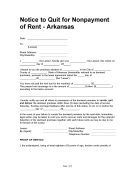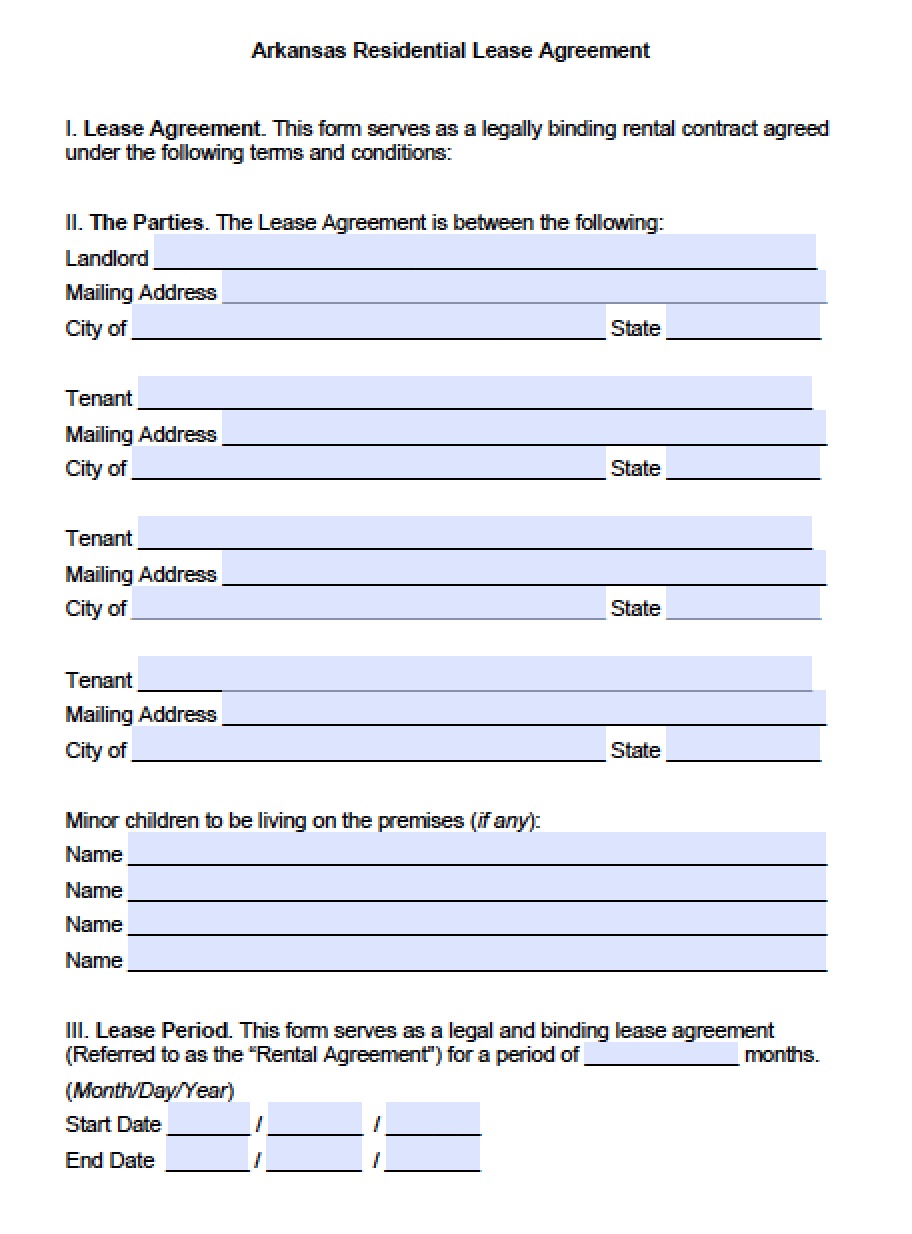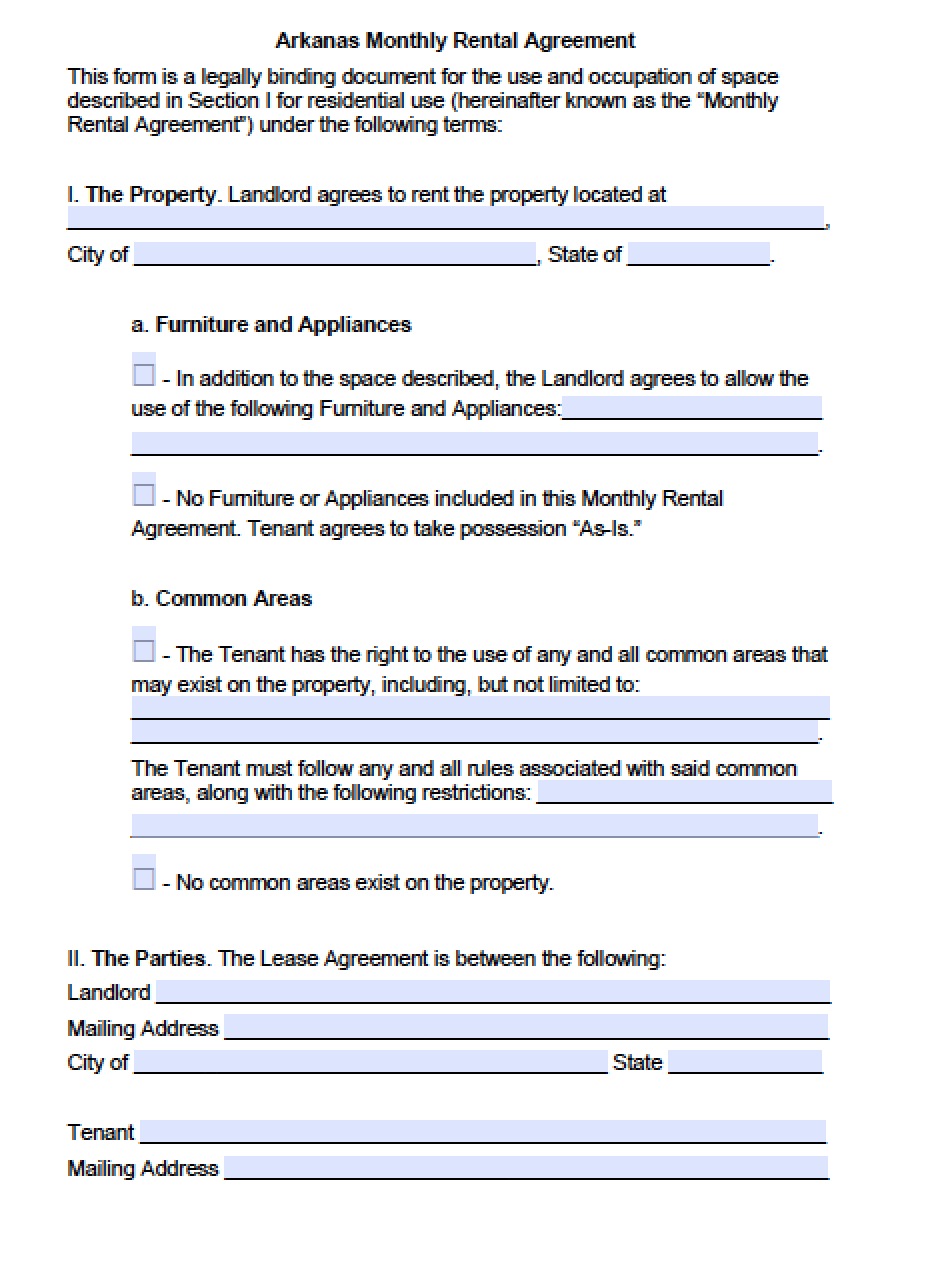Arkansas rental agreements are between landlords and tenants that enter into a binding contract for the leasing of property. Under a standard lease, rent is due on the 1st of the month with the tenant responsible for payment of other utilities and services. Before signing, the landlord will commonly request to screen the tenant with the use of a rental application.
Arkansas Rental Lease Agreement Templates | PDF
Arkansas Lease Agreements
The Arkansas ten-day notice to quit form is to be used at the landlord’s discretion to grant the tenant the ability to get caught up on rent by warning them of the tardiness of the owed amount, any applicable fees, and the possibility of eviction should the tenant fail to fulfill their obligations. According to § 18-17-701(b), after rent is five (5) days late, the property owner has the right to terminate the rental contract; therefore, this notice is particularly generous in…
The Arkansas standard residential lease agreement is one that details the relationship between a landlord and a tenant who is operating within a one (1) year term with monthly payments. The document will disclose who is responsible for paying utilities, the price of the monthly rent, the cost of the security deposit, and, more generally, the rights and responsibilities of both parties. Prior to choosing a tenant, it is advised that a landlord take the time to screen their applicants with a rental…
The Arkansas Rental Application is used to verify the legitimacy of a potential tenant, whether the tenant is involved with a one year, month-to-month, sub-lease, or commercial lease agreement. In a rental application, things such as an individual’s credit, background, employment, and even any previous rental history may be examined to verify the credibility of the possible tenant. Rental applications typically cost a fee which can add up to a prohibitive cost if the landlord has to pay each and…
The Arkansas month-to-month lease agreement is a contract between a tenant and landlord that renews every month so long as rent payment was delivered and both parties wish to extend the lease. Generally speaking, an agreement such as this is used when the tenant is looking for a temporary dwelling and doesn’t plan on living on the residence for a standard full-term (twelve months). For non-temporary living arrangements, a landlord or tenant should consider the Arkansas standard residential lease agreement. Maximum Termination…
An Arkansas commercial lease agreement should be completed whenever a landlord plans on accepting an industrial, retail, or office business onto his or her property. The agreement typically lasts for one (1) to three (3) years after signing it into effect. Like the majority of Arkansas Lease Agreements, it is suggested that the landlord does a credit and background check on the business owner and that the business owner agrees to pay a security deposit in case damage occurs on…
The Arkansas sublease agreement is a contract which involves the tenant of a rented property (called the “sublessor”) leasing the property out to a third-party called a “sublessee.” The sublessor should remember to inform the landlord whenever there is another party assisting to pay prior to drafting a sublease agreement. In the case that the sublessee does not make a payment to the sublessor for a certain month, the sublessor has to pay the rent to the landlord in full by…
STATE DISCLOSURES
Arkansas does not currently have any required disclosures to be delivered from a landlord to a tenant. However, under Federal law, if the housing unit was built prior to 1978, the lead paint disclosure form must be attached and signed by each lessee.
If a tenant or landlord has any questions about the laws within the State, they should review the Arkansas Residential Landlord-Tenant Act of 2007 and Chapter 16 – Landlord-Tenant.
SECURITY DEPOSITS
Maximum (§ 18-16-304) – A landlord cannot demand more than two (2) months’ rent.
Returning (§ 18-16-305) – The landlord is required to send the security deposit back to the tenant, along with a list of any itemized deduction(s), within thirty (30) days from the lease termination date. If the landlord cannot find the tenant within one-hundred-and-eighty (180) days, any and all funds become the property of the landlord.
LANDLORD’S ACCESS/ENTRY
There is no exact timeframe given by the State that states the notice required from the landlord before entering or performing an alteration or repair. However, it does state that the tenant may not ‘unreasonably withhold’ the property from being accessed by the landlord (§ 18-17-602).






